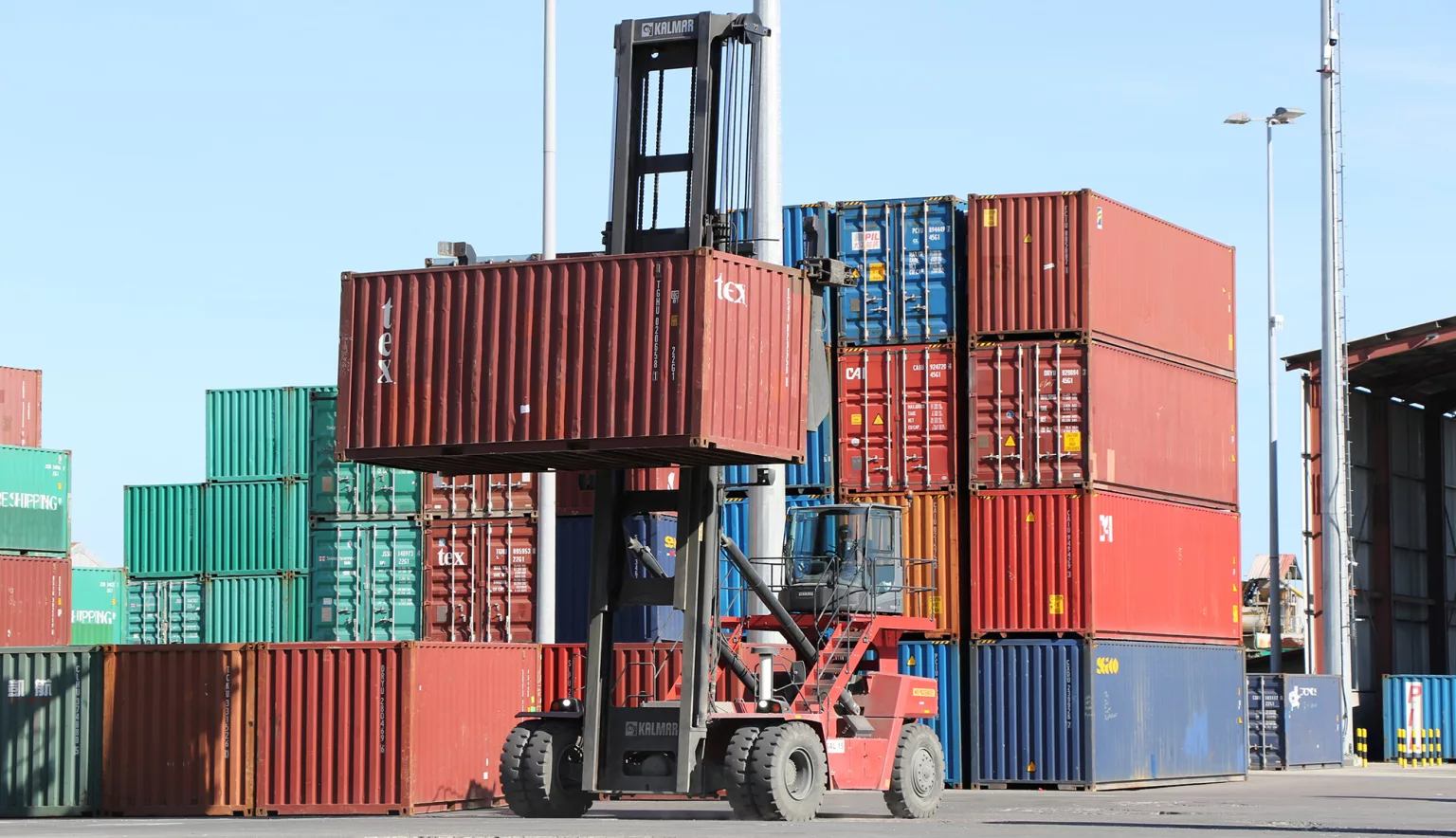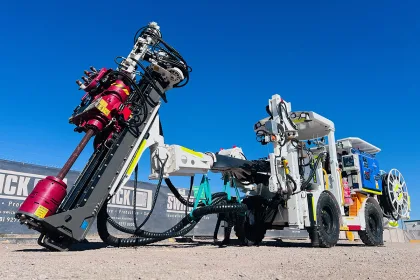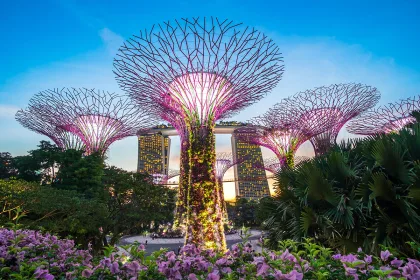Solomon Islands Ports Authority (SIPA) is charting the Solomon Islands’ progressive, transformative maritime course, its two key ports now standing as crucial pillars of the national economy.
MARITIME MARVEL
The maritime industry has been instrumental to the development of civilisations through time.
Providing humanity with the capacity for cross-continental exploration, mass fishing and greater mobility than land-based travel for trade, transport or warfare, it is understood that the first ships (if you can call them that) were developed many millennia prior to the BC era.
Initially consisting of single logs that floated down rivers with small cargo attached to them, greater numbers of logs were eventually strapped together forming rafts to carry larger loads.
Fast forward through the centuries and boats gradually became more sophisticated. The Austronesians invented the same oceangoing sailing technologies in 3000 BC that are still used today, allowing them to achieve seaborne migration and establish sophisticated trade routes throughout the Asia Pacific.
By 200 AD, records suggest that some ships were capable of carrying 700 people and up to 1,000 tonnes of cargo. Yet these vessels were still a far cry from the sea freighters that we know today.
The worlds biggest container ship – the OOCL Hong Kong – currently measures the length of about four football pitches, has a deadweight tonnage of 191,317 metric tonnes, and a capacity equivalent to that of 21,413 standard shipping containers.
Albeit impressive, this monumental surge in size is just one facet of the sector that has changed drastically in modern times.
Sophisticated marine technologies have been the subject of a similarly meteoric rise, with the likes of blockchain, artificial intelligence, robotics and analytics all stamping their mark, enhancing operational efficiency and introducing automated processes.
As a result, one of the world’s oldest industries now floats above many others, championing global technological progress.
Looking at the Solomon Islands, this rings particularly true. A relatively underdeveloped archipelago nation consisting of more than 900 islands, its success has always relied heavily upon the maritime industry. But no more so than it does today.
“The seafaring space is dynamic, it is thriving, and it is evolving,” declares Eranda Kotelawala, the Chief Executive Officer of Solomon Islands Ports Authority (SIPA) – a key organisation backing the reconstruction of the national sector.
Previously working a marketing and management capacity, Kotelawala’s career only aligned with the sector back in 2015 when he took on a combined role as Chief Operating Officer for both Fiji Ships and Heavy Industries Limited and Fiji Ports Corporation Limited.
From here, he moved to the Solomon Islands and became CEO of Solomon Islands Ports Authority in February 2017.
“My family has a maritime background,” Kotelawala explains, “My father and brother both have roots in the profession. Yet one of the main reasons why I myself followed suit was the numerous technologies rising to the fore across the sector.
“The whole state of play is changing, and it’s truly an exciting time.”
SOCIOECONOMIC ENTERPRISE
In the face of transformation, the role of ports has shifted dramatically.
Previously renowned as simple harbours, modern ports are now sophisticated strategic multimodal distribution hubs, highly capable of linking the sea with air, rail and road logistics.
Such can certainly be said of both the Port of Honiara and Port of Noro – Solomon Islands’ two key transhipment facilities. The former, situated on the northern edge of the country’s core landmass, is the larger of the two, featuring both dedicated domestic births and two key international berths compared to Port of Noro’s one mixed berth.
“These ports and Solomon Islands Ports Authority have come a long way since their inception,” explains Kotelawala.
“Looking at the South Pacific, SIPA is the second largest port authority in terms of the square footage that it has under its portfolio, and is one of the most profitable port-operating entities, despite the fact that we’re one of the only state-owned organisations in the region.
“Our ports act as the primary gateway to Solomon Islands. Owed to our naturally geostrategic location, they’re able to capitalise on trade routes between Australia, New Zealand, Japan, China, the US and Southeast Asia, and play a vital role in the economy, propelling development and acting as a major employer for local people.
“We currently have 500 staff under remit alone, let alone the indirect employment that our work helps to support.”
This growing role is further reflected by a memorandum of understanding signed last year between SIPA, Maersk Line (the world’s largest shipping company) and US firm Tri Marine – one of the largest tuna exporters in the world.
Famous for its fresh fish, timber and a number of other commodities, the collaboration at Port of Noro has allowed both shipment businesses to become the Solomon Islands’ major tuna exporters, helping to consolidate the country’s role within the global value chain by supplying local produce to the rest of the world.
ON THE SMART PORT PATH
Accompanying such agreements have been substantiated investments from Solomon Islands Ports Authority, Kotelawala highlighting how a number of the aforementioned technologies, amongst others, have been implemented to great effect.
“We recently invested $15 million in state-of-the-art LED lighting from Australia, providing us with the largest LED output of any port in the South Pacific right now,” he reveals. “Alongside a newly implemented CCTV system, these lights are connected through the country’s first fibre optic network.”
The former constitutes part of a wider Green Port initiative being pursued by SIPA in an attempt to reduce the country’s energy consumption, owed to LEDs consuming minimal energy in comparison to other forms of lighting. The company has also installed 150 solar powered lights across both of its ports to this end and is planning a 1 MW solar farm in Port of Noro to this end.
This is not all, however. In addition, the company has recently commissioned a new terminal operating system and building system to better cater to all industry stakeholders connected with both Honiara and Noro, striving towards smart port status.
The CEO explains: “We’re investing heavily in the digitalisation of our operations. We are the first in the region to install a state-of-the-art weigh-in-motion (i-win) system that weighs all the cargo both arriving at and leaving from our ports, for example.
“Meanwhile, we’re also planning to implement smart-gate entry systems and mobile-enabled booking systems for the trucking companies that we work with, and an x-ray scanning system to more effectively monitor the cargo that we deal with in the future as well.”
ADVOCATING GREATER INDEPENDENCE
The most important aspect of these game-changing strides in the eyes of the CEO is that they are all funded by SIPA itself.
Self-sufficiency is a core element of the company’s overriding mandate, not only in the way that it operates, working in a debt-free manner, but equally in the vision that it has for the entire country. Kotelawala himself is SIPA’s sole expat, the CEO preferring to impart knowledge and provide ambitious career opportunities for local people.
“We have a lot of talent retention strategies and training programmes geared towards furthering employee development,” he affirms.
Evidence of this comes from the Solomon Ports Internship Programme. Assisting degree-level students with work placements, it is a scheme that provides successful applicants with on-the-job insight into each of the organisation’s departments.
“We often send our workforce on international excursions to other ports around the world, allowing them to witness best practices and new techniques first-hand,” Kotelawala adds. “The idea is to see what may or may not work for us and introduce new techniques or processes within our own operation as they fit.”
In addition, the company recently embarked on a new leadership programme with a number of new locally recruited managers and has been pursuing a female empowerment programme, employing women in traditionally male dominated roles such as engineering, operations and security.
Long term, the idea is that the authority will stand as a prime example of Solomon self-sufficiency, operated, owned and run by local people in a profitable and effective manner – efforts complemented by an extensive corporate social responsibility programme.
The organisation takes an obligatory stance on impact investment. As a state-owned enterprise, it remains focused on helping local communities in a multitude of ways, from the backing of the religious community to supporting grassroots sports and pursuing education investments.
“We are very much dedicated to these practices,” Kotelawala affirms. “We’ve been working with rural schools, for example, providing them with computer labs. There are some children who don’t have as many opportunities as others from the word go, but we’re looking to change this by offering up equipment and scholarships.”
TAKING PRIDE IN NEW, EXCITING STRIDES
This extensive CSR platform, major technological transformation and an underlying emphasis on self-sufficient port operations combined, the future looks bright for Solomon Islands Ports Authority.
The organisation has seen a steady five percent increase of TEU vessels annually, now dealing with in excess of 500 vessel calls and 31,000 TEUs each year, testament to the success of the national maritime industry,
As a result, owed to these rising cargo volumes that both the Port of Noro and Port of Honiara have been handling, SIPA’s major focus for the remainder of 2019 and 2020 will be expanding capacity, not only via process optimisation but equally through physical expansion.
“For the next year, our main focus will be on improving our infrastructure,” Kotelawala affirms. “For any port, anywhere in the world, sound infrastructure is key to effective operation and management. We’ll be looking to add new jetties and new berths and rehabilitate the older ones, both for international and domestic purposes.”
The container terminals will also receive renewed attention – facilities that will be similarly crucial in enabling the region to accommodate for a greater number of containers. “We recognise that we need to be proactive,” the CEO adds.
Looking to the longer term, bolstered capacity is not the sole ambition of the SIPA.
Citing optimism about the Solomon Islands’ position in the regional transhipment industry and recognising the fundamental role and impact of port development strategies on the national economy, Kotelawala concludes with a buoyant outlook.
He states: “Port of Honiara will remain our primary asset, but we’re excited about some of the upcoming improvements which will take place at Port of Noro. It’s a relatively small facility right now in the grand scheme of things, but we’ve seen its volumes almost triple in the last eight or nine months.
“I’m also personally hopeful that we can continue to set an example for the rest of the region. I think we’re proving that state-owned enterprises don’t need to be privatised if they’re managed successfully, and that they can indeed become a real asset to any country’s economic development.
“The fact that we’ve been able to achieve all that we have, becoming a stalwart of the Solomon economy in the process, is owed to the fantastic team, partners and stakeholders that we work with – I am truly grateful for each and every one of their continued efforts.”





































